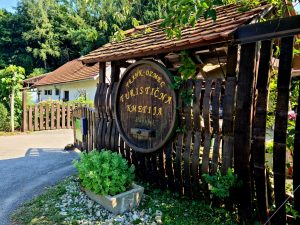My geography is terrible. My Hungarian geography is particularly bad. Add that to a horrible sense of direction and the countless times I’ve gotten lost in life are easily explained. I’d take a simple left or right over east and west any day, but even then you’d have to tell me which way to face.
I cannot fix the shape and direction of the Balaton in my head. I want to stand it on its end, vertically. Otherwise the whole North/South shore thing simply doesn’t make sense in my peculiar world of logic. Perhaps this is why I can count on one hand the number of times I’ve been down there … or is it over there? See what I mean?
When you take all this directionally challenged, geographic ignorance and put it behind the steering wheel of a car, you get disaster. I’m fine driving on my own. But when others are in the car with me, what little navigational sense I have switches off. I state clearly that I am simply driving. Others have to navigate and make decisions. But it rarely works well.
I thought we were going to see Keszthely. They thought we were going to the Balaton. The fact that Keszthely is on the Balaton is immaterial. I was thinking a wander round the town; they were thinking a swim. And as all of us are staunch believers in the capacity of divine inspiration to replace verbal communication, we ended up in Szigliget, the first signpost we saw after tempers frayed and sensibilities unravelled. The afternoon was in danger of spiralling into a chilly silence that would have done away with any need for air conditioning.



The village lies in the shadow of Szigligeti vár, the ruins of a castle built around 1260 atop a 242 metre hill. It is said that King Béla IV donated Szigliget to the Benedictines from Pannonhalma so that they could build a castle which then passed into royal ownership. The panoramic views of the Balaton and Tapolca are stunning and more than worth the hike up the hill and the steps up to the oldest tower. One of the few castles in Hungary to never fly the Ottoman flag, its soldiers managed to maintain its independence for 150 years. While some say it was blown up on the orders of Emperor Lipót in 1702, I have it on local authority that it was felled by a lightning strike. You choose.



What stones are left are beautifully showcased with tri-lingual signs (Hungarian, English, and German) explaining what once stood where. The chapel, now restored, is simple and lovely and given to quiet contemplation of how the world has changed in the 755 years or so since people first knelt to pray inside. With its Baroque kitchen, weapons display, and schoolroom, the place provides quite an insight into times past. It’s not difficult to imagine how things might have been. But if you don’t have the imagination needed, you can download an app that will do it for you. (That puts the smart back into smartphones.)

There is also a 2-3 hour study trail that takes in the castle and the village, with points of interest (everything from wildlife to volcanoes) noted on signposts along the way. Afterwards, to cool down, Szigliget strand provides respite for the sweaty traveller. Hitting it at 5pm as we did, the day before the season officially opened, we had the place practically to ourselves. Heaven.
Admission is 600 ft (concessions 300 ft). The castle is open seven days a week. From 9am to 7pm in June. From 8am to 8pm in July and August. Worth a visit, if you’re in the area.
First published in the Budapest Times 3 June 2016
Úgy áll ott a várrom,
mint öreg király fején korhadt koronája.
Ajtónak, ablaknak nyílásán áttör a
nap fénye, s az a fény a távolból
mintha drágaköve volna a koronának.
(Eötvös Károly)
There stand the castle ruins
like the decayed crown
on the head of an old king.
Through door and window breaks
the sunlight, and from a distance the light
is like the jewels in the crown.
(Translation: Bernard Adams)
Share this:
- Click to share on X (Opens in new window) X
- Click to share on Facebook (Opens in new window) Facebook
- Click to share on Pinterest (Opens in new window) Pinterest
- Click to share on LinkedIn (Opens in new window) LinkedIn
- Click to share on Reddit (Opens in new window) Reddit
- Click to share on WhatsApp (Opens in new window) WhatsApp
- Click to share on Pocket (Opens in new window) Pocket
- Click to share on Telegram (Opens in new window) Telegram
- Click to email a link to a friend (Opens in new window) Email







4 responses
I sympathise with your passengers………. 🙂
I live a few KM from Szigliget. In fact, I can see the castle from my house. And I can assure you no single lighting strike, or even 100 lighting strikes, could have destroyed that castle. An example of local small town lore and gossip. The actual (human caused) damage to the castle is a matter of historical fact, despite local gossip.
Also, you can not see the city of Tapolca from the castle. The St. George hill is in the way. Might I think you meant the lovely “Tapolca Basin” which is to the west of the St. George hill?
You might… I was just reading the signs 🙂